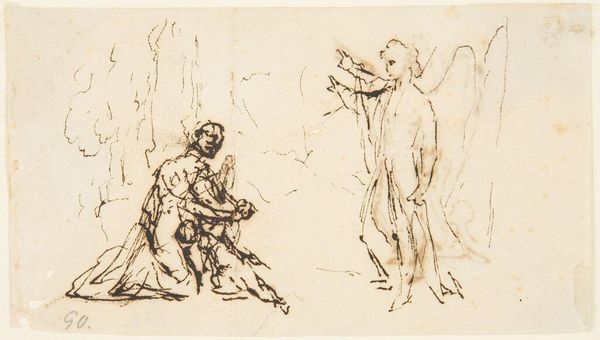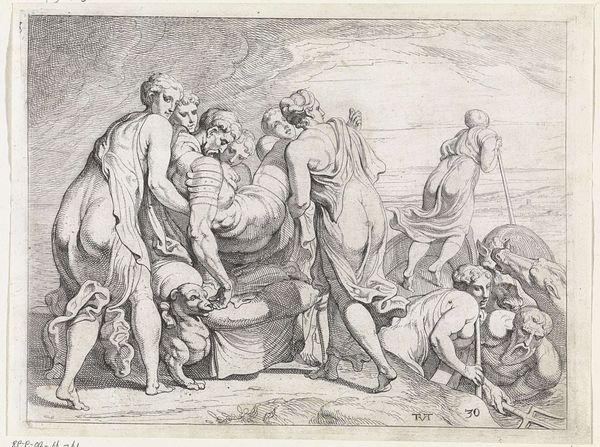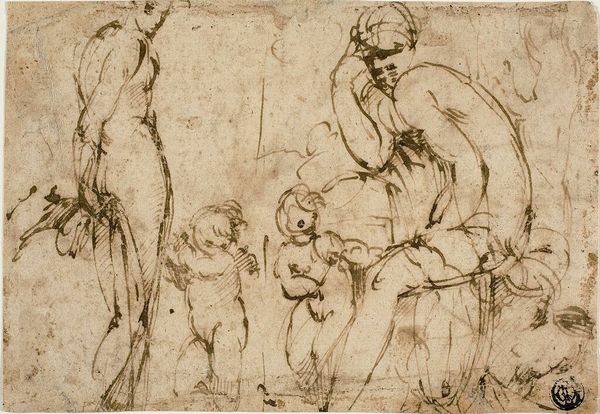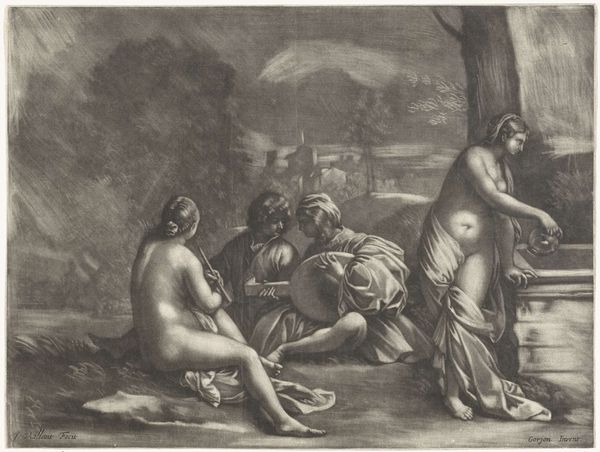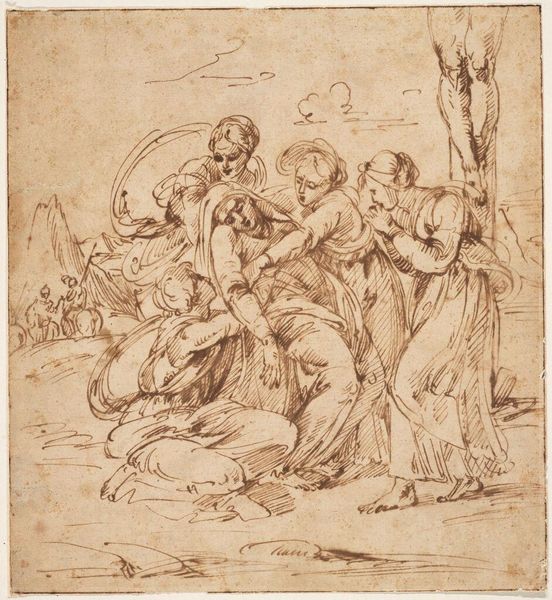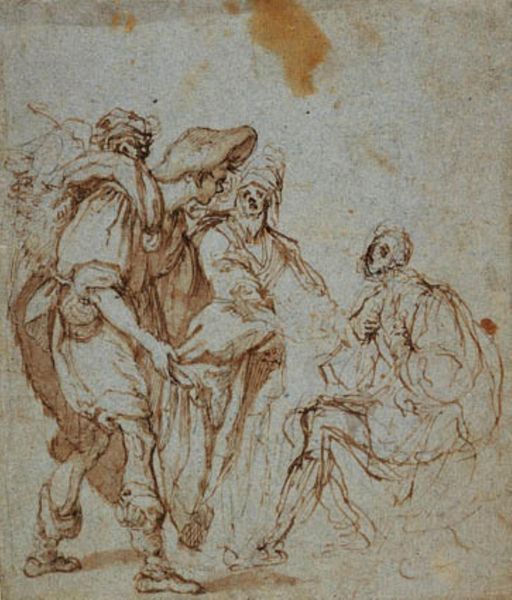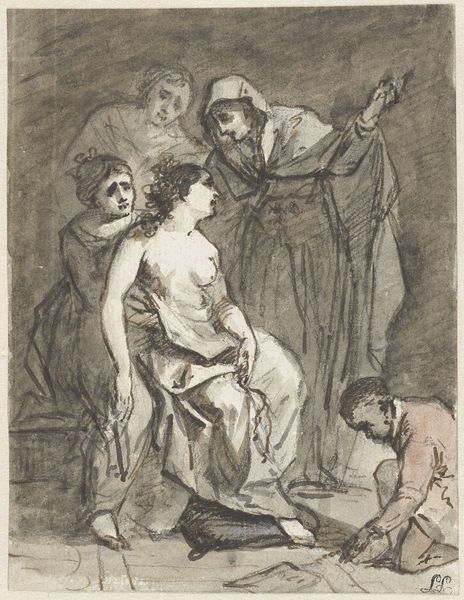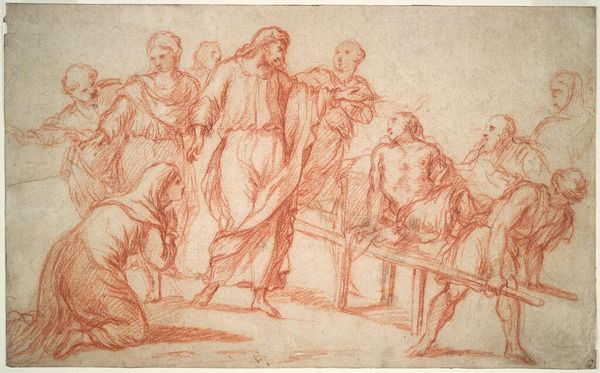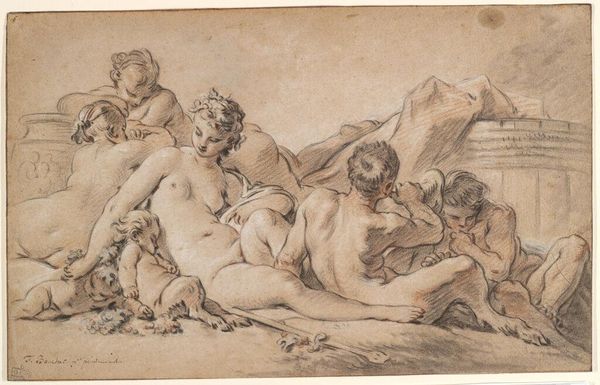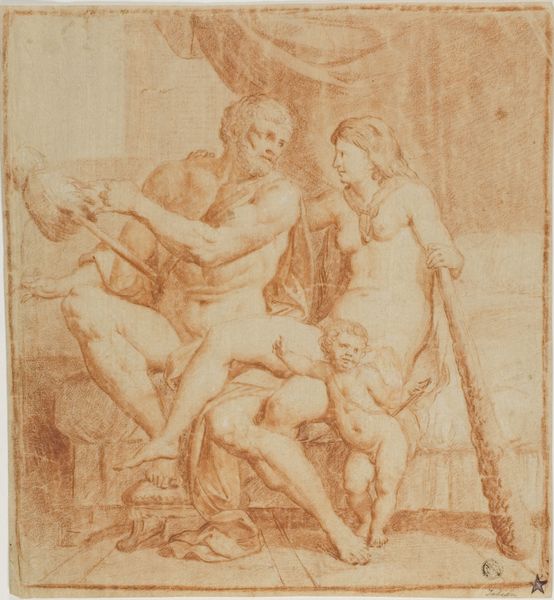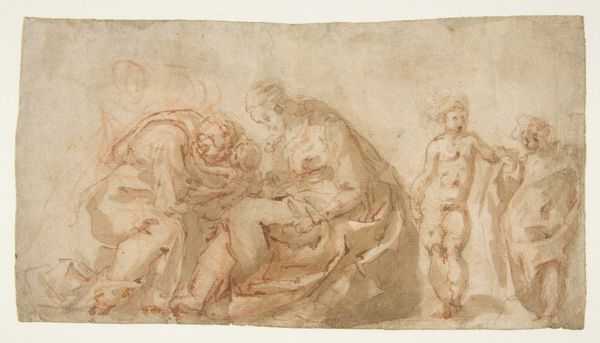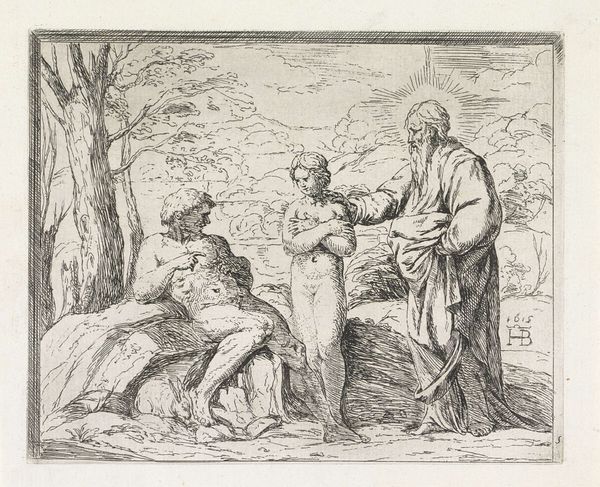
drawing, ink, charcoal
#
portrait
#
drawing
#
allegory
#
baroque
#
charcoal drawing
#
figuration
#
ink
#
genre-painting
#
charcoal
#
history-painting
#
nude
Copyright: Public domain
Curator: This drawing, rendered in ink and charcoal, is titled "Allegory of Fertility," and is attributed to Jacob Jordaens. You can currently find it at the Royal Museums of Fine Arts in Belgium. Editor: The first thing that strikes me is the density of figures and how their forms are rendered with such loose, energetic lines. It conveys a sense of raw, almost primal abundance. Curator: Indeed. Jordaens masterfully uses the media to suggest movement and texture. The ink washes create depth, contrasting with the sharp, decisive charcoal strokes that define the figures. We see this especially in the central grouping around what appears to be a newborn child, bathed in implied light. Note the deliberate obscuring of some background figures – structural scaffolding, really. Editor: And considering the implied abundance, what are Jordaens' material choices saying here? The stark contrast of the ink and charcoal is hardly subtle, making one think of the basic earthly elements at play— carbon as a core element for life but brought forth by labor from the ground and given form through craftsmanship and ingenuity. I wonder what dyes were in the ink and where those ingredients were sourced. Curator: A compelling point, though the "Allegory of Fertility" leans heavily on established visual motifs of the Baroque period: full-bodied nudes, cornucopias overflowing with fruit, and the overall dynamism and emotional intensity. Semiotically, the figures serve less as individuals, but rather, embodiments of prosperity, growth, and fecundity. This piece almost acts as a prototype for his later, grander allegorical paintings, and so maybe those materials simply mirrored standard sketching processes in his studio practice. Editor: Perhaps. But doesn’t the lack of detail and almost rushed appearance heighten our awareness of the production of art? Are we not, in fact, made more acutely aware that this supposed high art relies, at its base, on common materials shaped through deliberate acts? One is faced with something so fleeting as raw reproduction sketched, caught between an intellectual pursuit and bodily labor. Curator: A valid consideration. Perhaps a reading into the processes rather than the symbols opens different critical interpretations, although either position might find space within the Royal Museum's collections. Editor: Indeed, viewing these approaches to art together opens interesting viewpoints and conversations about our relationship to its meaning, which can be constantly recreated.
Comments
No comments
Be the first to comment and join the conversation on the ultimate creative platform.
